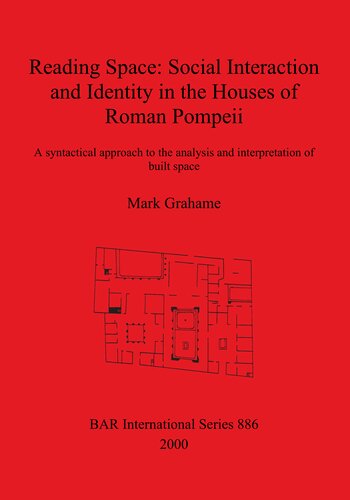

Most ebook files are in PDF format, so you can easily read them using various software such as Foxit Reader or directly on the Google Chrome browser.
Some ebook files are released by publishers in other formats such as .awz, .mobi, .epub, .fb2, etc. You may need to install specific software to read these formats on mobile/PC, such as Calibre.
Please read the tutorial at this link: https://ebookbell.com/faq
We offer FREE conversion to the popular formats you request; however, this may take some time. Therefore, right after payment, please email us, and we will try to provide the service as quickly as possible.
For some exceptional file formats or broken links (if any), please refrain from opening any disputes. Instead, email us first, and we will try to assist within a maximum of 6 hours.
EbookBell Team

4.1
70 reviewsStarting as an examination of space in Roman Pompeii, the author soon found the sheer architectural fabric of the city at odds with the rather simplistic explanations for it offered in the academic literature. This prompted a more rigorous exploration of the definition of 'built space' and an ultimate goal of highlighting the diversity of housing in Pompeii and offering a new interpretation of its meaning. In an attempt to broach the archaeological question of how we can come to understand human social action from a contemplation of built space, the author turned equally to the disciplines of architecture and anthropology, before realizing the need to develop his own interpretative framework. What follows is a study which takes as its point of departure the fabric of Pompeian housing, with a theoretical understanding of the relationship between construction and human society, and, as such, reaches out beyond Roman Archaeology to touch anyone interested in the analysis and interpretation of built space. Contains 99 pages of ground plans, access maps, and tables of spatial analyses.